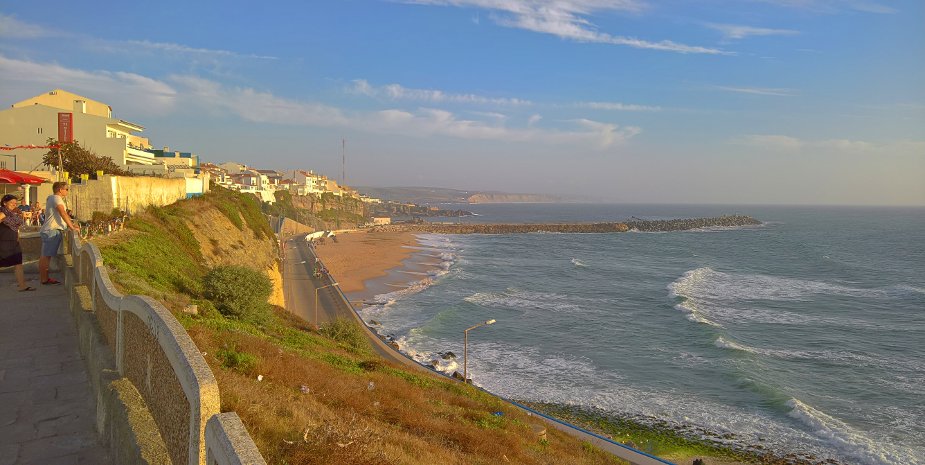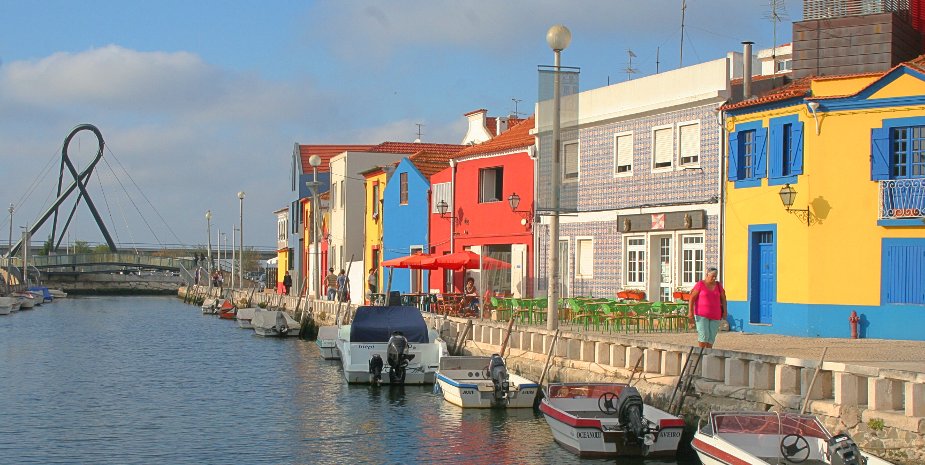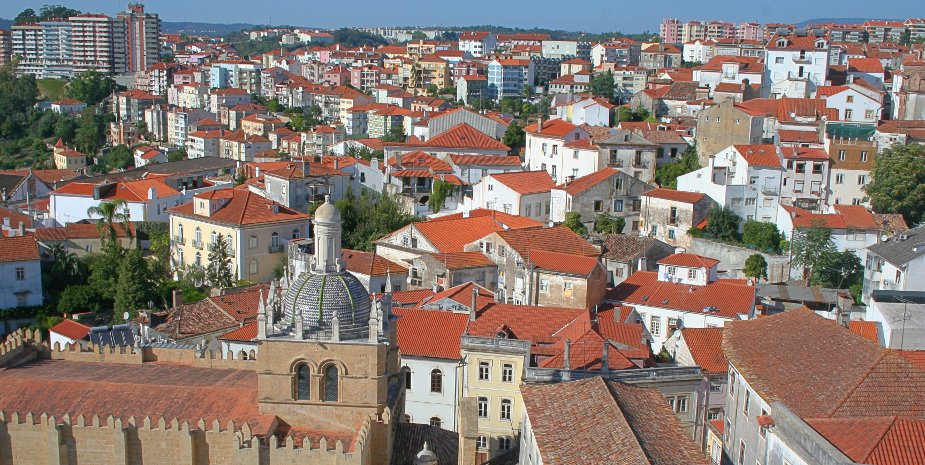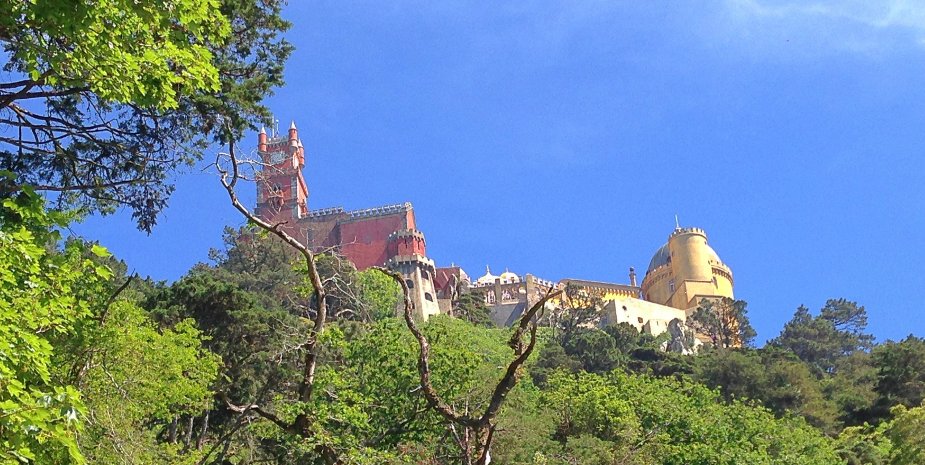As Lisbon and Azoia are more or less in the centre of the Portuguese coats length from North to South and the Spanish border is only 2 hours and a quarter away, there are a lot of places easy to reach for day trips or two-day trips. Just to mention a few:
NORTH of Lisbon
Sintra (1h 5’) with the Palacio da Pena, a fairy-tale palace on a hill with on a clear day a view to the sea.
Ericeira (1h 20’) is a surfers’ paradise.
Óbidos (1h 35’), a small fortified town with its “bougainvilleaed” walls still in a good state.
Alcobaça (2h) with its beautiful gothic monastery, which, due to its artistic and historical importance and its Manueline style ornamentation, was listed by UNESCO as a World Heritage Site.
If you have more time you can venture even further north to Coimbra (2h 30’) with its old university and Porto (3h 40’) at the Douro River with its wine cellars, both absolutely worth seeing. A trip along or even on the river Douro with the vineyards where the Port wine grows and the Vinho Verde is worthwhile.
And if you even have a lot of time, there is the mountain region of Trás-os-Montes with the city of Guarda (3h 40’) and a small town called Miranda do Douro (5h 30’) where approx. 7,000-10,000 persons still speak Mirandês, an officially recognised language, which is related to the Western-Iberian dialect group of Astur-Leonese languages.
EAST of Lisbon
The Alentejo is a remarkable agricultural region, which was the cradle of the communist movement that brought about the Revolution of 1974. Many poems and songs have been written about it, and they say the Alentejo knows no shade… Indeed, avoid going there on a hot day in August as it can rise to a temperature of 45°! But otherwise it has a beautiful landscape with golden wheat fields, cork oaks, and trees with oranges in February, cherry blossoms in June. In the Parque Natural da Serra de São Mamede (2h 40’) you can also find medieval villages and castles like Marvão and Castelo de Vide.
Évora (1h 40’) and Beja (2h 10′) are the two most well-known towns: Évora (approx. 57,000 inhabitants) being the capital of Alentejo has an nice old town centre, medieval walls and the remains of a Roman temple. It is also a UNESCO World Heritage Site and a member of the Most Ancient European Towns Network. Beja has an old 13th century castle and a museum about the Visigoths.
The border between the districts of Évora and Beja provides a breathtaking view where the river Guadiana fans out before it comes together again close to Aldeia da Venda and flows across the Spanish border to Badajoz. And again some beautiful places are to be found like the old town Reguengos de Monsaraz (2h 5′) and the area along the river at Alqueva (2h 20′).
SOUTH of Lisbon
Alcácer do Sal (1h 10′), lying in a salt mine area, is a small town (approx. 13,000 inhabitants) with steep streets and a castle on top of it. It has a very nice atmosphere and it lies at the estuary of the Sado river. Alcácer (Al Qaşr) is an Arab word meaning “castle” or “borough” and Sal means salt. It used to be a centre of merchant traffic during the times the Moorish period.
Grândola (1h 25′), just a bit further south, is the town that gave its name to the song of the Carnation Revolution in 1974: “Grândola, Vila Morena” composed by Zeca Afonso, a poet, singer and political activitist. His son was chosen to be used as the password transmitted by radio to indicate the beginning of revolution. You can find a monument that looks like a giant music sheet giving the notes and text of the song as a memorial to the Revolution.
On you way down south to the Algarve, along the Alentejo coast you find the Southwest Alentejo and Vicentine Coast Natural Park (2h 50′).
Popular towns and beaches in the Western part of the Algarve are Sagres, Lagos and Albufeira while Faro is close to the Spanish border. We are speaking of towns that are like glued to rocks and towering above stretches of sand with little fisher boats painted in Portuguese style.
Sagres (3h 15′) became famous because of the nautical school established by Prince Enriques o Navegador (Henry the Navigator) in the 15th century. And the Ponta de Sagres (Sagres Point) is a promontory, which hosts the Cabo de São Vicente (St.Vincent’s Cape), the most southwestern tip of Europe that offers breath-taking sunsets!
Lagos (2h 55′) is popular with tourists due the beautiful rock formations (Ponta da Piedade) and its active nightlife during the summer months.
Albufeira (2h 40′), originally a fishermen’s village with a gorgeous beach, is nowadays a centre of tourism with golf courses, hotels and restaurants which are not all typically Portuguese anymore.
WEST of Lisbon
And then there was …. the ocean. But alright, if you follow the road from Lisbon along the river Tejo westwards, the so called “Marginal” or take the train (Linha de Cascais) from Cais de Sodré in Lisbon, there is also still the glamourous Portugal to be found in Estoril (1h) with its casino and in Cascais (1h 10′) with its shops and night life. And just 5 km north of Cascais is the Guincho beach (1h 10′) very popular for surfing, windsurfing and kitesurfing.



